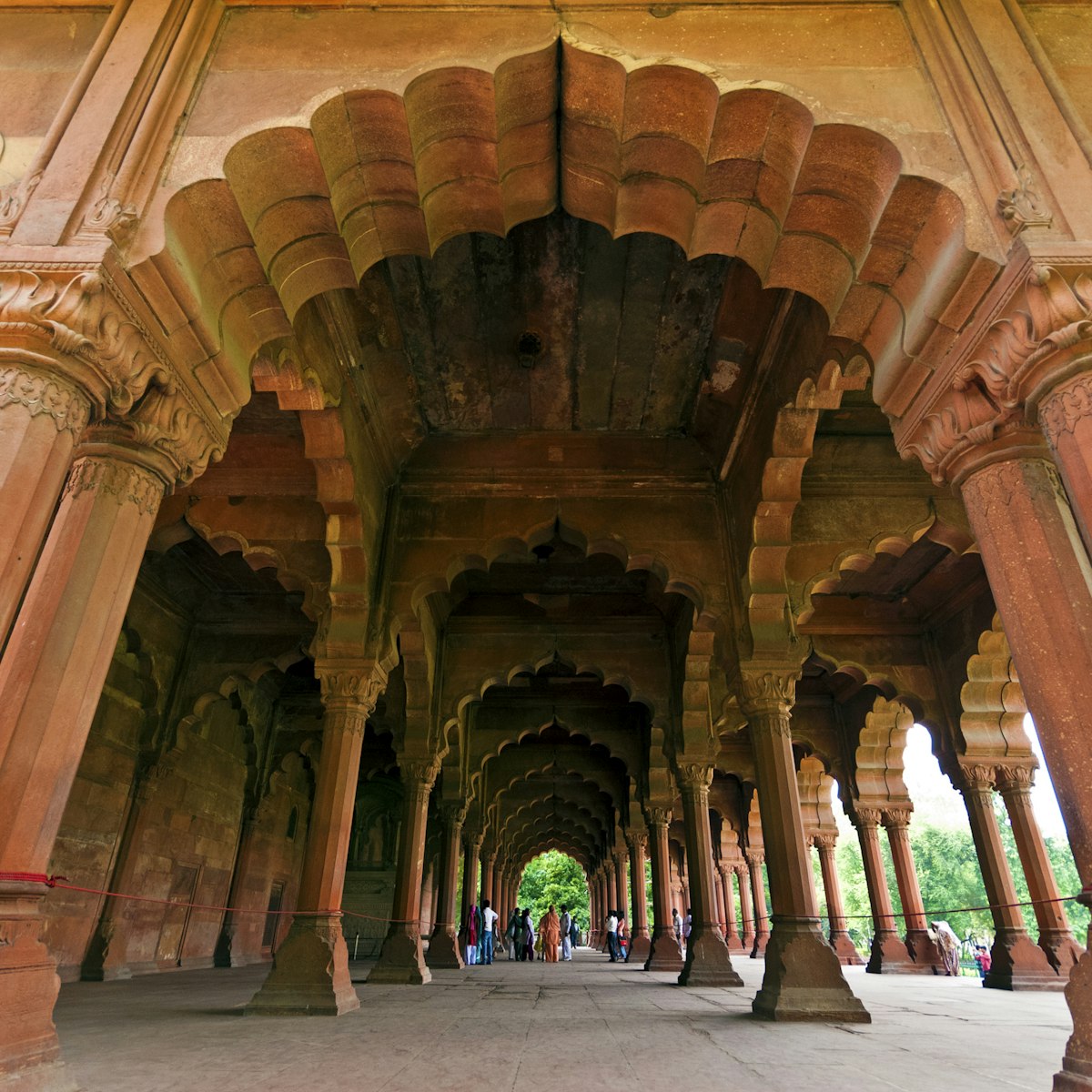
Old Delhi (Shahjahanabad)
Founded by Emperor Shah Jahan and surrounded by a magnificent 18m-high wall, this fort took 10 years to construct (1638–48) and is rumoured to have had…

Old Delhi (Shahjahanabad)
Founded by Emperor Shah Jahan and surrounded by a magnificent 18m-high wall, this fort took 10 years to construct (1638–48) and is rumoured to have had…
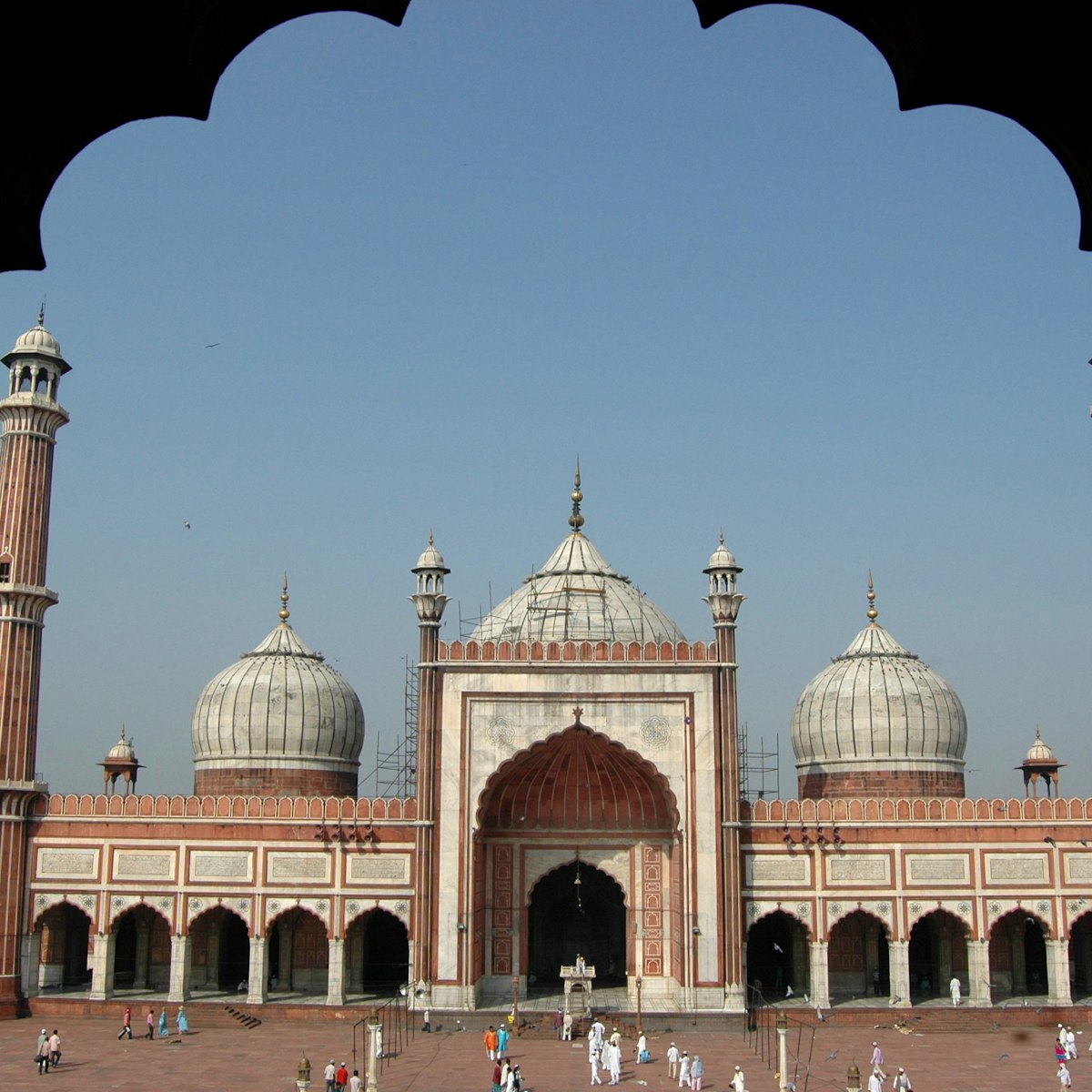
Old Delhi (Shahjahanabad)
A beautiful pocket of calm at the heart of Old Delhi's mayhem, the capital's largest mosque is built on a 10m elevation. It can hold a mind-blowing 25,000…
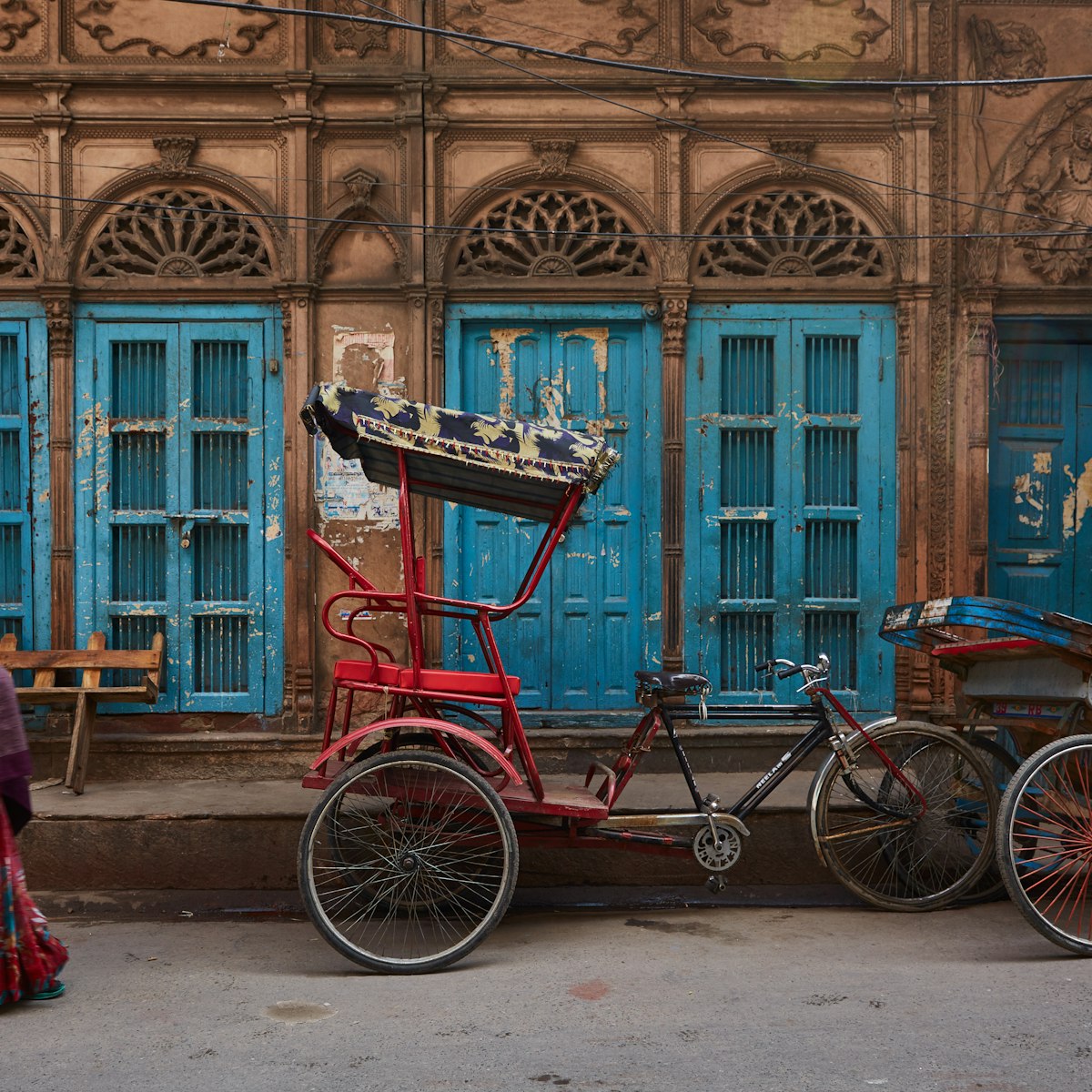
Old Delhi (Shahjahanabad)
Old Delhi’s main drag is lined by Jain, Hindu and Sikh temples, plus a church, with the Fatehpuri Masjid at one end. Tree-lined and elegant in Mughal…
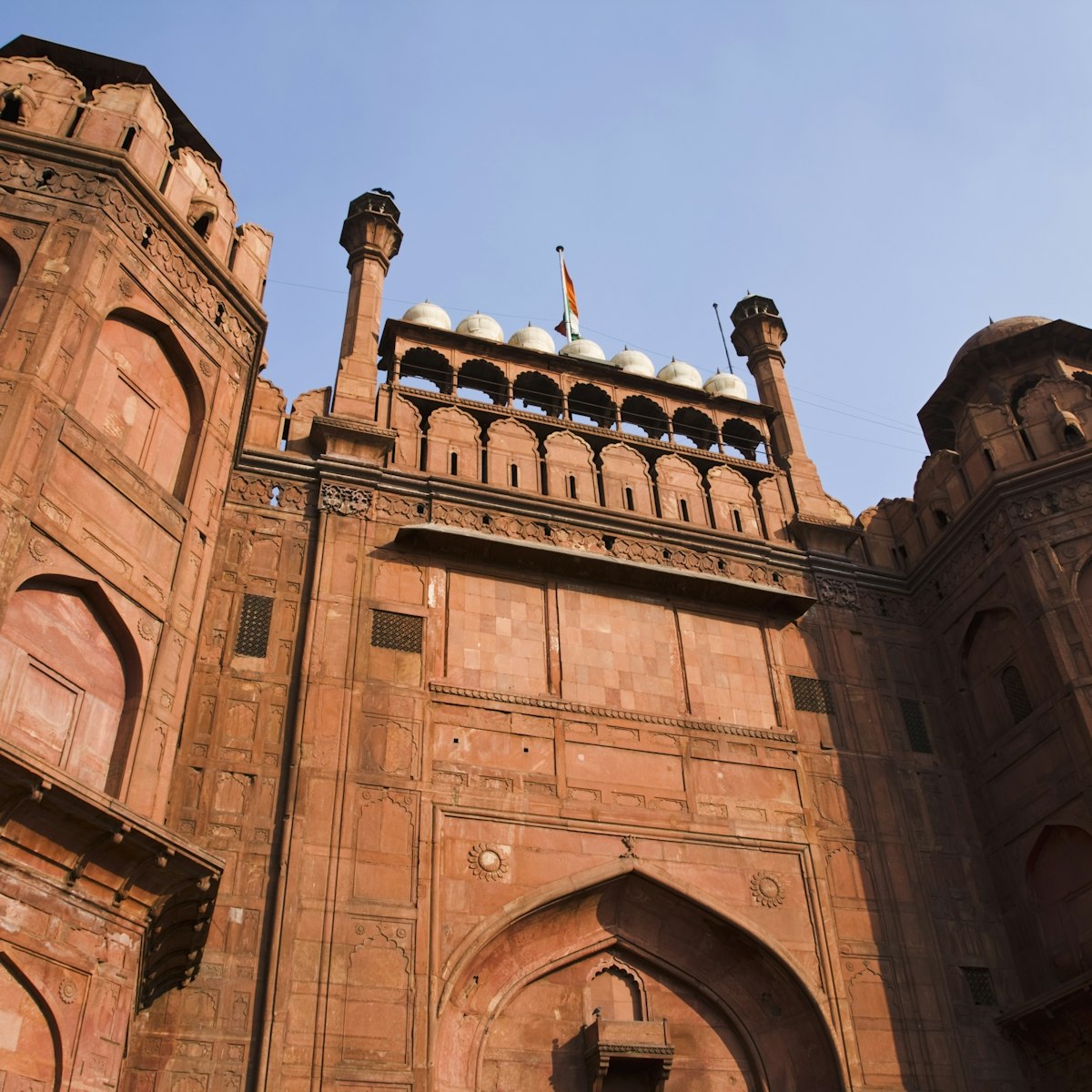
Old Delhi (Shahjahanabad)
The main entrance to the Red Fort is hidden by a defensive bastion built in front by Shah Jahan's son Aurangzeb. During the struggle for independence,…
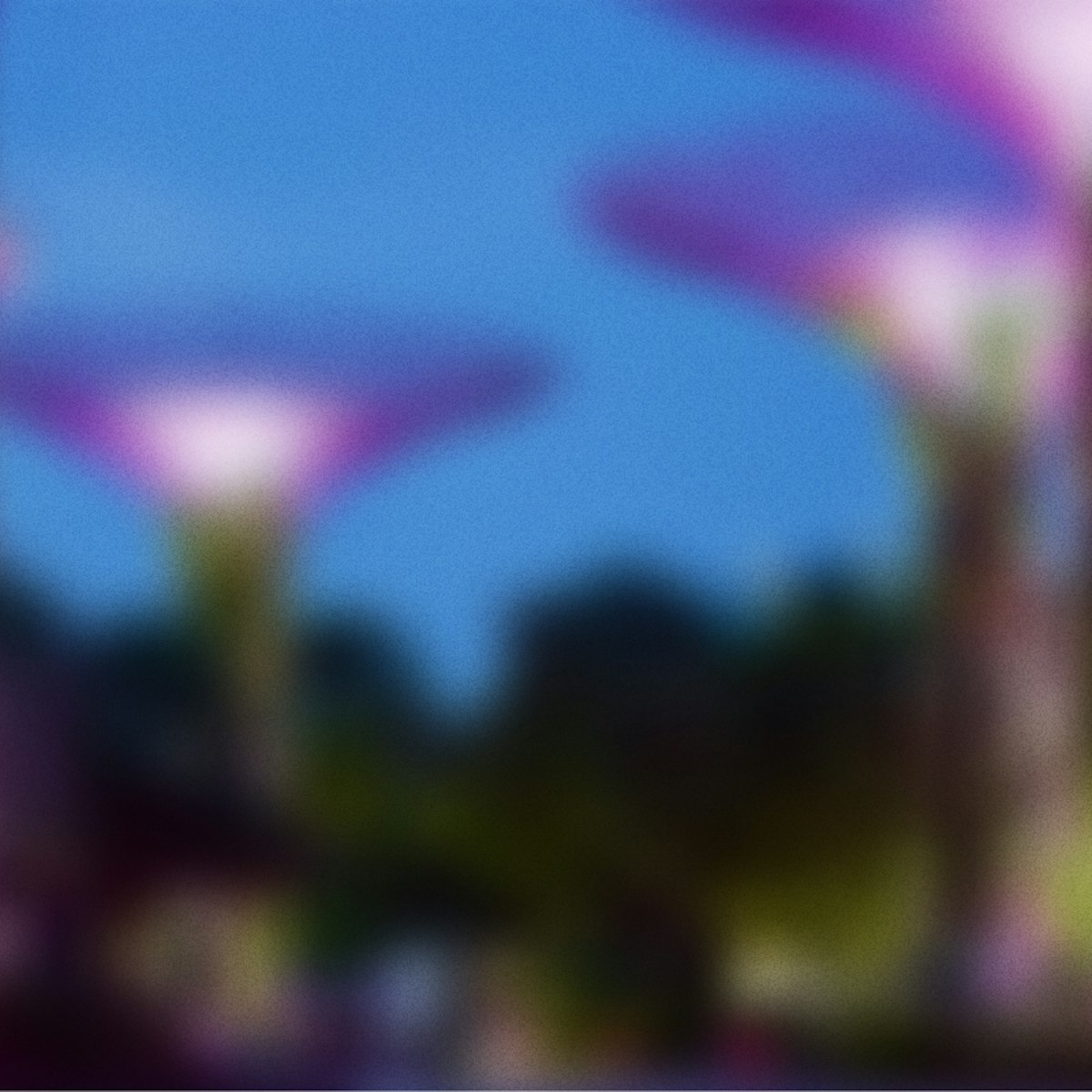
Old Delhi (Shahjahanabad)
South of the public area of the Diwan-i-Khas in the Red Fort is the Khas Mahal, where the emperor lived and slept, shielded from prying eyes by lace-like…

Old Delhi (Shahjahanabad)
This Hall of Private Audiences in the Red Fort was used for bowing and scraping to the emperor. Above the corner arches to the north and south is…

Old Delhi (Shahjahanabad)
So-named because its exterior was once a riot of colour, Rang Mahal in the Red Fort was the home of the emperor's chief wife. Like the other Red Fort…

Old Delhi (Shahjahanabad)
Built by Fatehpuri Begum, one of Shah Jahan’s wives, this 17th-century mosque is a haven of tranquillity after the frantic streets outside. The central…

Old Delhi (Shahjahanabad)
In the Red Fort, this arcade of sandstone columns was the hall of public audience, where the emperor greeted guests and dignitaries from a throne on the…

Old Delhi (Shahjahanabad)
Opposite the Red Fort is the red sandstone Digambara Jain Temple, built in 1658. Interestingly, it houses a bird hospital established in 1956 to further…

Old Delhi (Shahjahanabad)
This small white mosque in the Red Fort was built by Aurangzeb as his private place of worship. The outer walls align with the fort walls, while the inner…

Old Delhi (Shahjahanabad)
Dating from the 3rd-century-BC reign of the Buddhist emperor Ashoka, the pillar was brought here by Feroz Shah, and is incredibly well preserved.

Old Delhi (Shahjahanabad)
South of the Rang Mahal in the Red Fort is this pavilion, thought to have been built for Arjumand Banu Begum (also known as Mumtaz Mahal) – the Taj Mahal…

Old Delhi (Shahjahanabad)
The Shahi Burj, in the Red Fort, is a three-storey octagonal tower that was Shah Jahan's favoured workplace. From here he planned the running of his…

Old Delhi (Shahjahanabad)
This step-well within the Red Fort is believed to date to the Tughlaq period, and is thus much older than the other fort buildings. It has a haunting…

Old Delhi (Shahjahanabad)
Amid the chaos of Paharganj, the temple that gives the metro station here its name is a wonderfully calming escape, with a landscaped garden leading to a…

Old Delhi (Shahjahanabad)
At the eastern end of Chatta Chowk in the Red Fort, the arched 'Drum House' once accommodated royal musicians and served as parking for royal horses and…

Old Delhi (Shahjahanabad)
A tranquil tree-shaded area marks the 1964 cremation site of Jawaharlal Nehru, the first Indian prime minister, just to the north of Raj Ghat. The…

Museum on India’s Struggle for Freedom
Old Delhi (Shahjahanabad)
Closed during the Red Fort renovations, this museum is housed in the large British-built barracks inside the battlements. It told the story of the…

Old Delhi (Shahjahanabad)
Closed for renovations at the time of research, this museum upstairs at Naubat Khana in the Red Fort used to display ferocious-looking and fascinating…

Old Delhi (Shahjahanabad)
Built in 1721, this mosque has gilded domes, hence its name. In 1739, the Persian invader Nadir Shah stood on the roof and watched his soldiers massacre…

Old Delhi (Shahjahanabad)
The icing-sugar-white 18th-century Sisganj Gurdwara marks the martrydom site of the ninth Sikh guru, Tegh Bahadur, executed by Aurangzeb in 1675 for…

Old Delhi (Shahjahanabad)
In the Red Fort, this imperial bazaar used to cater to royal women and glitter with silk and jewels for sale. Today's wares are rather more mundane…

Old Delhi (Shahjahanabad)
Closed to the public, the royal hammam in the Red Fort once contained a sauna and hot baths for the royal family.

Old Delhi (Shahjahanabad)
Iconic new suspension bridge over the Yamuna River. It's tower is the tallest structure in Delhi. Can be viewed from the Tibetan enclave of Majnu-ka-Tilla.

Old Delhi (Shahjahanabad)
One of the few remaining 13th-century gates to Shahjahanabad, this is named after Sufi saint Hazrat Shah Turkman Bayabani, whose tomb lies to the east.

Old Delhi (Shahjahanabad)
Traffic swirls around this historic city gate, built in 1638 as one of the main entrances to the walled city of Old Delhi, or Shahjahanabad.

Old Delhi (Shahjahanabad)
Close to Kashmere Gate, this forgotten cemetery is the last resting place for hundreds of Delhi’s colonial-era residents, many of whom perished in…

Old Delhi (Shahjahanabad)
The Digambara Jain Temple complex houses an unusual example of the Jain devotion to preserving all life in the form of this unique bird hospital, with…

Old Delhi (Shahjahanabad)
This historical oddity is worth seeking out if you like exploring forgotten corners. Around 10km north of Old Delhi, a lone obelisk marks the site where…

Old Delhi (Shahjahanabad)
Before the renovations, this museum set inside the Mumtaz Mahal in the Red Fort, displayed a fascinating collection of royal vestments, miniature…

Old Delhi (Shahjahanabad)
Across a bridge from the Red Fort, but part of the same complex, this fort was established by Salim Shah Suri in 1546, so predates its grander neighbour…

Old Delhi (Shahjahanabad)
Built in 1864, Delhi's Town Hall originally housed a library, the European Club and the Lawrence Institute. There was once a statue of Queen Victoria in…

Old Delhi (Shahjahanabad)
Erected in 1863, this red sandstone gothic tower was built by the British to commemorate the Indian and British soldiers who died in British service…

Old Delhi (Shahjahanabad)
This northernmost gate (leading to Kashmir) was the largest of all the entrances to the walled city. It was only built in the 19th century, and was…

Old Delhi (Shahjahanabad)
Over 300 years old, this is one of Shahjahanabad's four remaining gates; opposite is Ghazi-ud-Din's Tomb and Mosque, built by a nobleman at the time of…

Old Delhi (Shahjahanabad)
Established in 1951, Delhi's library is open to all those with proof of residency, and has 1.6 million books in various languages.

Old Delhi (Shahjahanabad)
Buy tickets and rent audio guides here for the Red Fort.

Old Delhi (Shahjahanabad)
This distinctive curved tower-block houses several local TV companies and is easy to spot if you're looking for Jhandewalan Cycle Market.